Unhinged Swedish textile historian Lace is love, lace is life
Don't wanna be here? Send us removal request.
Text
Yesterday when I got to the textile center there were 4 visitors kinda crowded around my loom looking at it and like leaning over and examining how it worked, so when I came up and was like "hello!" and took a seat they were like "oh!! Is this your loom? Can we ask you questions about it??"
So of course I was like "yeah sure!" and the one lady goes "where does the color come from??? How does it get between the white threads?" At which point I was like OHHH their baseline knowledge is like. Zero. So I got to show them how the bobbin goes in the shuttle, and how the treadles raise the different shafts to let you pass the shuttle through, and how the pattern depends on the way the loom is threaded and the order you raise the shafts, etc etc etc and they were SO engrossed. I loooove when people ask me questions about how it works cus it's so fun watching them be like :0!!!!
3K notes
·
View notes
Note
Hej!! Omg, tack så mycket för alla tipsen! 🙏😭💖💖🫶
Du råkar inte ha resurser för herrkläder med? Jag är ickebinär, så att kunna sy både och hade varit en dröm. 🙌🙇💛💛
Lade några tips under första tråden på karlkläder. Har sämre koll på bloggar, finns inte jättemånga som skriver om det på svenska.
Men vill du ha inspiration är ju Pinsent Tailoring på YouTube ett starkt tips.
3 notes
·
View notes
Note
Är du svensk?? 🙏🥺✨️ omg!! Vart har du lärt dig sy historiska kläder?? Jag letar ihjäl mig efter turorials och gått till så många sy-butiker, det finns inget! 😭 tell me your secrets!!
Tjena! Vad kul att du intresserar dig för historiska kläder <3
Jag gick sömnad på Sätergläntan, där man lär sig sy folkdräkt och modern sömnad. Folkdräkterna är konstruerade som 1700- och 1800-talskläder, så där fick jag mycket gratis. Om du letar mönster skulle jag säga att det finns mer på internet och på engelska, såklart, men ibland så smyger det förbi mönster från bland annat Jamtli som man kan knipa och få lära sig sy bland annat jackor, kjolar och blusar från sent 1800-tal eller förra sekelskiftet.
Många nördar postar ju tutorials på sina personliga bloggar och sådant. Här har du några tips på svenska resurser som är väldigt bra och pålitliga:
Lycka till med dina sömnadsprojekt och hör av dig om du har flera frågor 🥰
14 notes
·
View notes
Text
47K notes
·
View notes
Text
making stuff is one of the best parts of being alive
32K notes
·
View notes
Note
what is your LEAST favorite stitch?
I don't like counted work at fucking all. So: the cross stitch.
1K notes
·
View notes
Text
Let go of the idea that diy will inherently look shit. All your clothes are handmade you just don't see the people doing it.
25K notes
·
View notes
Text

wip on my little sisters birthday present (pillow cover) she’s been into these strange beasts lately…
85 notes
·
View notes
Text
I will not spend my whole paycheck on fancy yarn. I will not spend my whole paycheck on fancy yarn. I will not spend my whole paycheck on fancy yarn—
979 notes
·
View notes
Text
why my clothing isn’t “affordable.” trust me, if i could price it cheaper, i would. unfortunately i am not independently wealthy so all i can do is design and sell high quality garments that are sewn to last with certified ethical labor and price them as affordably as im able to. i know my clothes are still not in everyone’s budgets and i know that sucks, especially for plus size people who have so few options, but i believe the people who make our clothes deserve compassion, safety and proper compensation.
1K notes
·
View notes
Text
Machine smocking tutorial
While working on my Eleanor Guthrie cosplay, I researched how to do smocking with a sewing machine (rather than by hand) I’m quite pleased how it turned out, and I thought I’d share a little tutorial. If you have any questions, do not hesitate to reach out!
What you’ll need:
Sewing machine with decorative stitches
Embroidery thread (I used Gütermann Sulky Cotton Multicolor in grey/beige tones)
A ruler or measuring tape
Chalk or disappearing marker
1. First, you must decide on your ratio (how much fabric you will gather), and mark your gathering stitches lines. I went for a 1:3 ratio and marked lines 18cm long. My desired final gathered length is 6cm. My lines are 1.5cm apart, but you can experiment with lines closer or wider apart for a different effect.
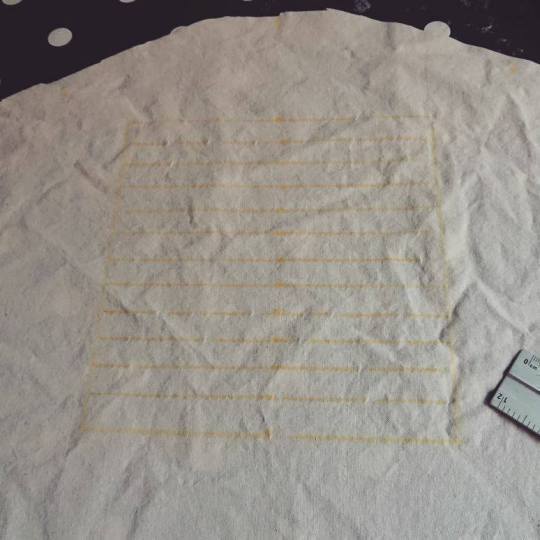
2. After sewing a long gathering stitch on each line that you marked in step 1, gather your fabric down to the length you decided in the first step (in my case, 6cm). Press your fabric to set the pleats.
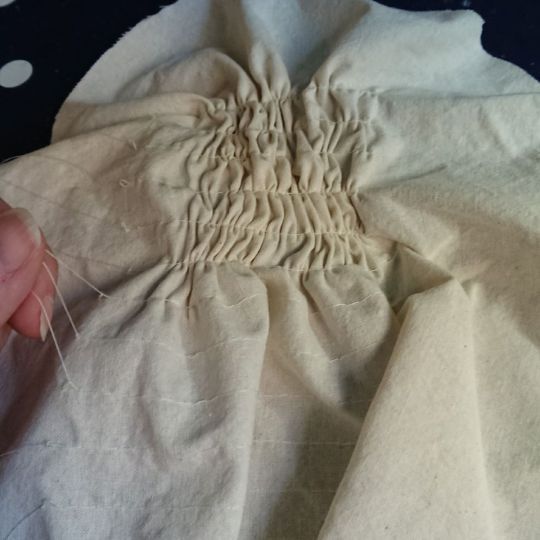
3. Go back to your sewing machine and sew decorative stitches _between _each gathering line. This will permanently set the pleats. Note: smocking isn’t elastic like shirring is, don’t confuse them! They kinda look the same and they both reduce the width of your garment by gathering fabric, but they have very different in behavior: shirring keeps its elasticity by using elastic thread as the bobbin thread, while smocking is permanent. I see smocking as something more decorative rather than functional, like shirring is.
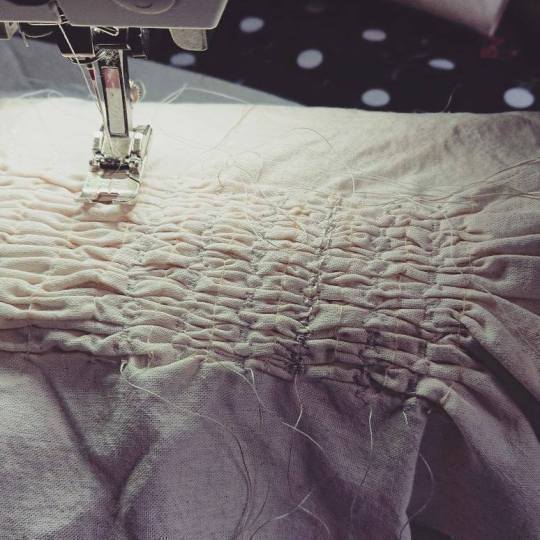
4. Remove all your gathering stitches (the most tedious task of them all!), give your fabric another good press with steam, and there you go! Admire your beautiful smocked piece!
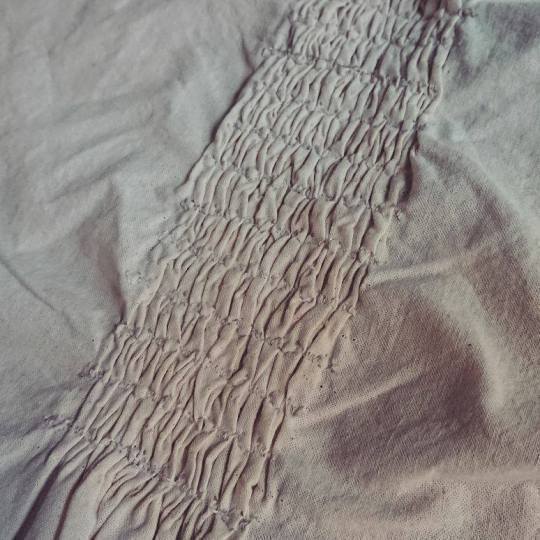
And done!
There are many other methods, including smocking by hand, but I hope this short tutorial will have inspired you to give it a try! Smocking is not difficult and the final result is sure to make a statement on your costume!
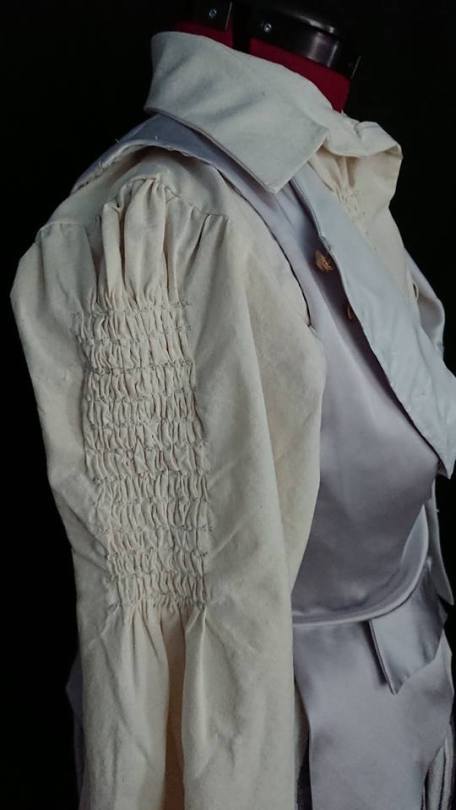
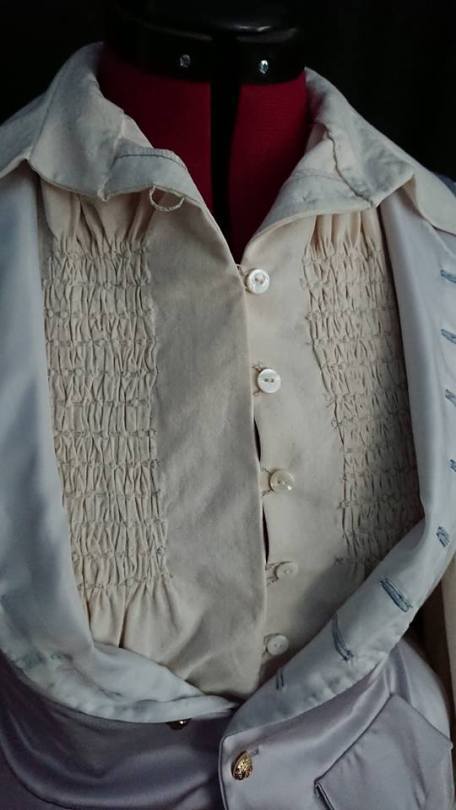
Liked this tutorial? Don’t hesitate to share it! Sharing is caring! ♥
645 notes
·
View notes
Text
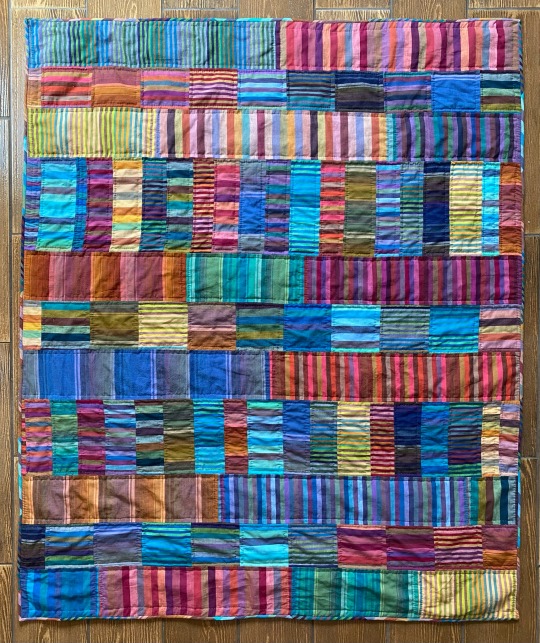
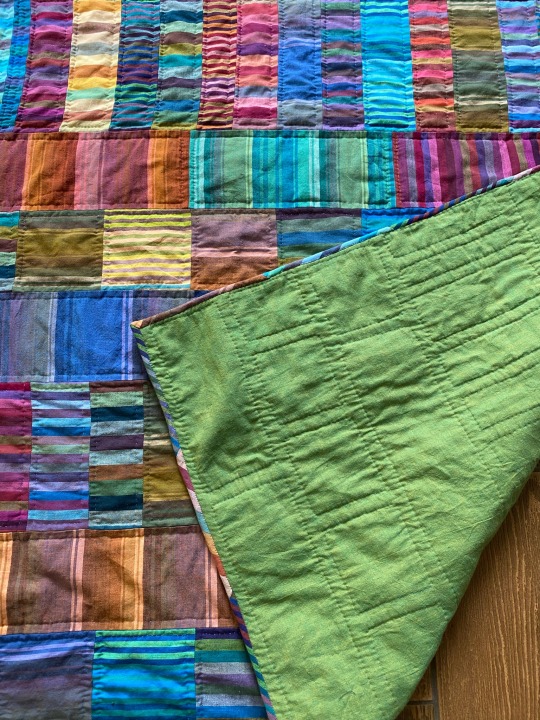
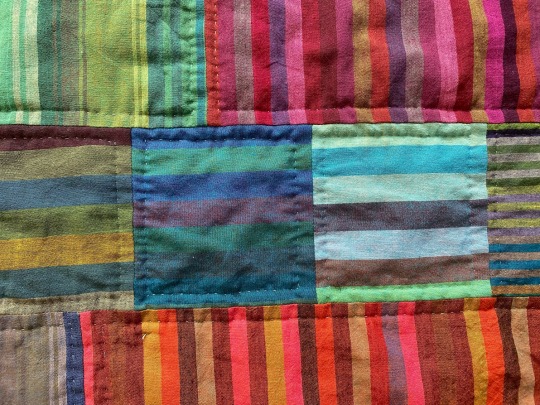
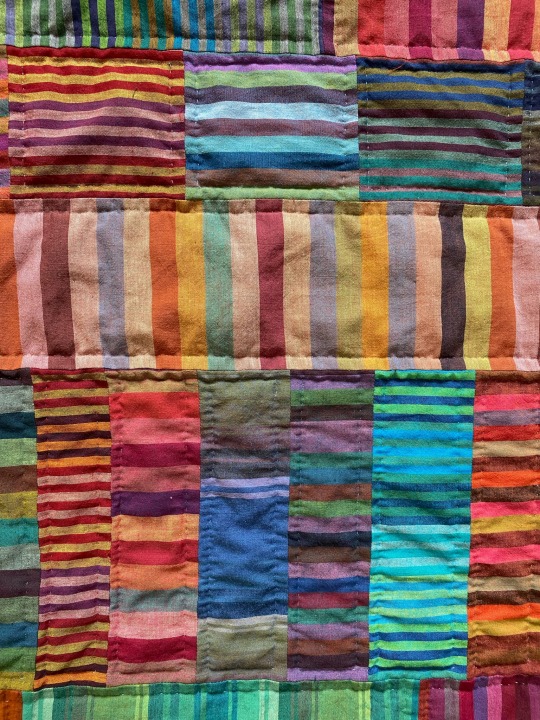
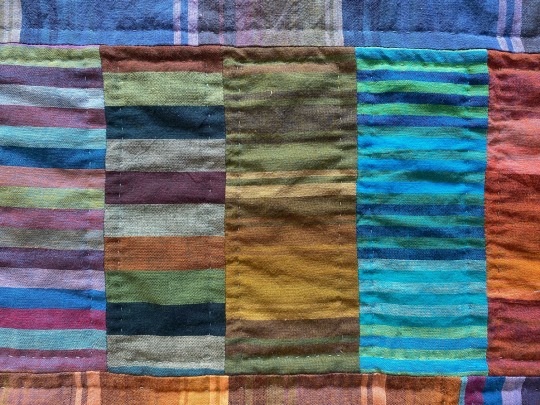
The quilt for my neighbor is done! It is a little rough, but I was in a rush to wrap it up since I have other projects to get to.
Time to wrap it and hand it off to them! I even got it done months before the baby arrived.
217 notes
·
View notes
Text

Jim Lambie (British, 1964), Wool painting (Ray of Light), 2021. Wool on canvas, 51 x 40.5 x 4 cm.
172 notes
·
View notes














